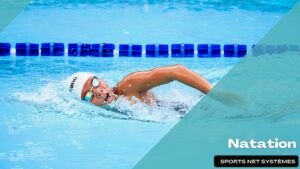 Two of the most common features of training programs of swimmers competitive are the periodization of training volume and intensity and the transition from training to racing.
Two of the most common features of training programs of swimmers competitive are the periodization of training volume and intensity and the transition from training to racing.
A periodized training and tapering program is based on the principle of overload—recovery—peaking.
This principle forms the basis of preparing swimming training programs with the aim of increasing the level of competitive performance.
A fundamental principle of preparing athletes is that periodization and tapering applies equally to all the different aspects of fitness, such as endurance, speed, strength, flexibility, and power. The training program must provide an overload (stimulus) to force the body to adapt to a previously unencountered level of stress. After sufficient application of the stimulus (in terms of magnitude and frequency), a period of recovery and regeneration will allow residual fatigue to dissipate. If the processes of overload and recovery are managed correctly a period of super compensation will occur so that performance is elevated to a higher level for important competitions.
Periodization can be defined as the division of the annual training plan into smaller and more manage- able phases of training. This approach permits one aspect of fitness to be the focus of training, white maintaining the development of other aspects. In essence a periodized training program is really about being an organized and systematic coach. The transition from training to racing is commonly referred to as the taper and is characterized by a reduction in the volume of training and the development of race speed. Both periodization and the taper lead to the peaking of performance necessary for high-level and international competition.
From a physiological viewpoint, there are several reasons for a periodized and balanced training program leading up to major competition :
- A higher training load without excessive fatigue.
- Faster recovery and regeneration.
- Maintaining performances close to their maximum for a long period of time.
- Correct peaking for the major competition of the year.
- Maintaining a basic level of fitness over a long period of training (or even a period of reduced training).
- A greater degree of specificity for individual events.
- A more efficient and effective taper (and supercompensation) process.
- More complete adaptation to training without two or three parts of the program interfering with each other when trained concurrently.
- Better planning for both major and minor competitions.
- More effective integration of sports science support with the training program.







